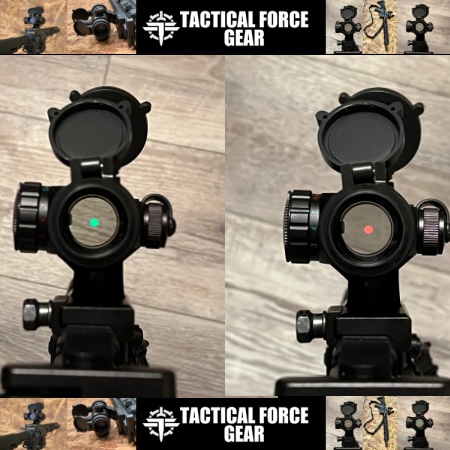A quick look at the .307 Winchester, a cartridge that’s been quietly eating the .30-30’s lunch.
The development of the rimmed .307 Winchester began in 1980, with the first public announcement in December 1982. However, the cartridge—and the Model 94 XTR Angle Eject carbine chambered for it—were not available until early 1983. The Marlin Model 336ER in .307 chambering introduced at the same time is no longer offered.
The Angle Eject feature is a design modification of the beefed-up Model 94 XTR that ejects spent cartridge cases to the side, rather than straight up, the same as earlier Model 94 actions. This was accomplished by changing the position of the extractor and ejector, and by lowering the receiver’s right sidewall.
The .307-caliber designation is to avoid confusing this cartridge with the other .30 calibers. It actually uses standard 0.308-inch bullets. The .307 Winchester is essentially a rimmed .308 Winchester, although there is a difference in the overall cartridge length. Original factory loadings had 150- and 180-grain bullets.
The popular Model 1894 Winchester lever action has always suffered from two major deficiencies: The design didn’t allow center mounting of a scope sight, and the tubular magazine required the use of flat-point bullets to prevent one cartridge from setting off others in the magazine under recoil. These factors combined to relegate the Model 1894 to largely short-range use. The new XTR Angle Eject redesign eliminates the scope-mounting problem and modernizes an old but popular action.
The .307 Winchester can enhance the range and power of lever-action rifles so chambered. It is, based on factory ballistics, faster than the .30-30 by 375 fps in muzzle velocity. Although the .307 Winchester has the same general configuration as the rimless .308 Winchester, there are slight differences that prevent it from achieving full .308 power. For one, the bullet is seated slightly deeper, to maintain an overall length compatible with the length of the Model 1894 action; for any given barrel length and the same bullet weight, the .308 will deliver about 60 to 110 fps more muzzle velocity. Also, with its pointed bullet, the .308 will lose velocity at a slower rate than the flat-point .307.
The .307 has slightly less velocity at 200 yards than the .30-30 has at 100 yards. If the .30-30 is an adequate 100-yard-plus deer cartridge, then the .307 is certainly a 200-yard deer cartridge. It’s not likely to replace the .30-30 as America’s favorite deer cartridge, but it is a more versatile cartridge and certainly takes the Model 94 carbine out of the woods, bush and short-range class. Although it has been reported that the .307 Winchester has thicker case walls and, therefore, reduced internal volume, measurements do not verify this.
.307 Winchester Loading Data and Factory Ballistics
| Bullet (grains/type) |
Powder | Grains | Velocity | Energy | Source |
| 110 Sierra HP | H322 | 44.0 | 3,000 | 2,195 | Hodgdon |
| 130 Speer FP | H4895 | 43.0 | 2,762 | 2,200 | Hodgdon |
| 150 Hornady RN | H4895 | 42.0 | 2,604 | 2,255 | Hodgdon |
| 170 Hornady FP | Bl-C (2) | 44.0 | 2,535 | 2,425 | Hodgdon |
| 170 SP | IMR4064 | 41.0 | 2,500 | 2,360 | Hornady |
| 160 FTX | FL | – | 2,650 | 2,650 | Hornady 8273 |
| 180 SP | FL | – | 2,510 | 2,518 | Winchester X3076 |
Editor’s Note: This article is an excerpt of Gun Digest’s Cartridge’s Of The World.
Raise Your Ammo IQ:


Next Step: Get your FREE Printable Target Pack
Enhance your shooting precision with our 62 MOA Targets, perfect for rifles and handguns. Crafted in collaboration with Storm Tactical for accuracy and versatility.
Subscribe to the Gun Digest email newsletter and get your downloadable target pack sent straight to your inbox. Stay updated with the latest firearms info in the industry.
Read the full article here













